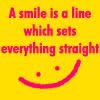3 Is: Inspiring, Impressive, Interesting / Wednesday, April 18, 2007
Today's Real Estate lecture was super interesting. Prof Hu invited a guest lecturer from the UK to give a lecture on value management. In his lecture, he talks about applying value management and function analysis into the management of real estate.
Value management is about creating wealth and usually applied at the design and planning stage. The application of value management helps elimination of unnecessary costs, providing clients with evidence of decision making process and providing more functions for less cost. His lecture today sets me thinking about the degree of functionality in buildings today. Are all the inbuilt functions necessary?
Think about this (quoting from the prof):
Lets say you bought a Sony DVD player for say $1000. It has multiply functions for example; an alarm clock function, a locking system whereby you can lock it and prevent people from using it etc. You are paying for these additional functions which you do not need or use. They are unnecessary cost. Fair enough, because these products are mass produced for the mass market. So if you want the DVD player, it comes together with it and you pay for it.
But if you apply this principle to Real Estate, are you going to provide additional unnecessary components into your building? This will cost a bomb. In the design of property, you cannot design for mass market. You have to design for one, and that is your client. Thus, there is a need for value management. Function analysis is important in helping to eliminate unnecessary cost, namely component cost, material cost, buildability cost etc.
Therefore, application of VM offers better business decisions by providing decision makers a sound basis for their choice, and helps improve quality of products and services by clearly udnerstanding and giving due priority to your client's real needs.
Academic aside, the prof provides a lot of insights as to how we view things. I totally agree that we tend to view things in a very straight way. In our minds, we already have an anchor point that we relied on when making decisions or during problem solving. This is call being heuristic i think. But in fact, we should think laterally and broaden up our thinking framework instead of thinking in a straight way.
Just a simple question that he asked:
Take for example, 140 pple participated in a Tennis Open Tournament. How many matches are there in this Tournament.
How would you approach this question to get the ans?
Method 1-
Round 1: 70 matches for 140 pple
Round 2: 35 matches for 70 pple
Round 3: 18 matches for 35 pple
.
.
.
So in the end, there are 139 matches altogether.
That is relatively easy. However, say there are 429 pple who participated instead. How many matches will that be?
The answer is 428.
One local student provided answers for both the questions in less than a minute each and got them correct. How?
Well, we all know that generally Chinese students are very good at maths. So it is reasonable for them to come up with the answer almost immediately. But what really impressed me is not the speed that he came up with the answer, but the approach he used to get the anwer.
His reasoning is that since there are 140 pple in the tournament, and there is 1 winner, so there should be 139 matches, because the other 139 participants played and lost a match.
I'm sure most pple will use method one to derive the answer. I used that.. haha..
I was really impressed with the answer given by the student. And its not just 1 student who got the right answer. There was 2. And i believe, there are others who knew but did not spoke up.
Very impressive indeed.
Jun blogged at
7:54 PM
Interesting Signs / Friday, April 6, 2007
Was looking at some of the photos I took, and thought I should share some of the interesting signs I saw in Shanghai. First up, one showing you how to differentiate between real and counterfeit notes, located just across the road from the school gate.

This is what it says:
1) 看钞票纸,人民币纸张坚挺有_性,揉搓起来哗哗作响。
2) 看水印,水印图案只有对着光亮才能看出来。
3) 观察印刷,人民币采用凹版印刷,油墨高干纸面触摸有手感。
4) 辨别颜色,人民币颜色清晰,图案鲜明,纹路清楚。
The next two photos provide reasons as to why one should not step on grass. First one was found in sch, and the second, in Hangzhou. Very cute signs!

小草在休息请勿打扰

小草在生长请勿打扰
Next up, Spot the similarity!


And to end off, how about "Decline with Food?"

Ciaoz!
Jun blogged at
4:30 PM




 小草在生长请勿打扰
小草在生长请勿打扰

